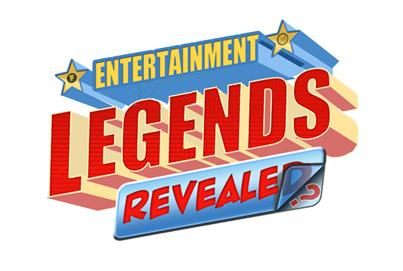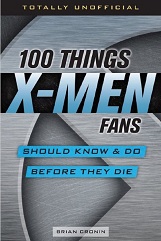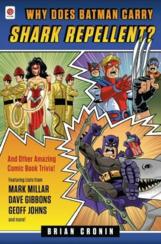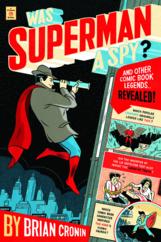Here is the latest in a series of examinations into urban legends about movies and whether they are true or false. Click here to view an archive of the movie urban legends featured so far.
MOVIE URBAN LEGEND: Walt Disney used to not allow women to be trained as animators for his company.
A great phrase that is used to refer to societal change is the “new normal,” which is an excellent distillation of the idea that what is “normal” to us is always in a state of change. So while we can look back at the past and pass judgment on how backwards certain viewpoints that were “normal” then, there is a good chance that eighty years from now the people of 2084 will be looking back at 2014 and shaking their heads at some of the things that are currently “normal” in our culture. However, while you can accept that that will always be the case, it doesn’t mean that you still can’t be surprised at what passed for “normal” years ago. You can still be surprised to look at the lengths a movie company had to go through to get the word “damn” into a movie in 1939. And you can still be surprised to see sexist views simply matter-of-factly expressed by a company in their correspondence. That is what we’re examining today, as reader Mark G. wrote in to see if I could authenticate (or debunk) a letter that made the rounds back in 2007 reportedly from 1938 that stated that Walt Disney would not hire any women to train as animators for their films (Meryl Streep famously quoted this letter in a speech about Emma Thompson’s performance in the historical drama about the contestable relationship between Walt Disney and Mary Poppins author PL Travers, Saving Mr. Banks).

Read the rest of this entry »
Tags: Animated Film, Walt Disney
April 29th, 2015 | Posted in Movie Legends Revealed | 1 Comment
Here is the latest in a series of examinations into urban legends about novels and novelists and whether they are true or false. Click here to view an archive of the novel urban legends featured so far.
NOVEL URBAN LEGEND: Charles Dickens was paid by the word.
Reader Audrey sent in this one awhile back, and it’s a very popular one – the notion that noted novelist Charles Dickens was paid by the word for his work.
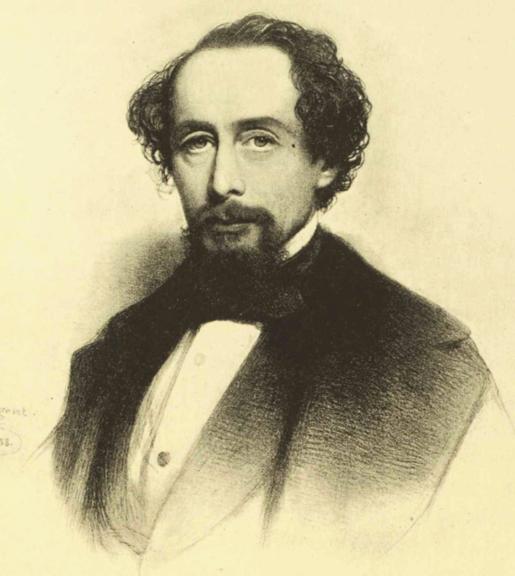
This one is a bit tricky, as I suppose depending on the way you look at it, you could make some sort of argument to that effect, but I think it is such a stretch that it is effectively so misleading that “false” is still the best option.
Read the rest of this entry »
April 28th, 2015 | Posted in Grab Bag Legends, Novel Legends Revealed | No Comments
Here is the latest in a series of examinations into urban legends about TV and whether they are true or false. Click here to view an archive of the TV urban legends featured so far.
TV URBAN LEGEND: The state of Mississippi once banned Sesame Street.
Mississippi has a unique place in the history of Sesame Street. Most importantly, Greenville, Mississippi was the birth place of Jim Henson, creator of Sesame Street and he lived in nearby Stoneville, MS during his childhood. In fact, another nearby city, Leland, MS claims to be the “birth place of Kermit the Frog,” since Henson spent so much time there as a child.
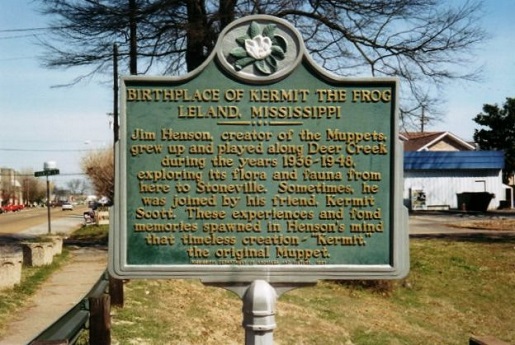
Henson never challenged the claim and in fact, in 2002, Jim Henson Productions filmed Kermit’s Swamp Years in Mississippi, effectively confirming that the swamp that Kermit grew up in WAS in Mississippi.
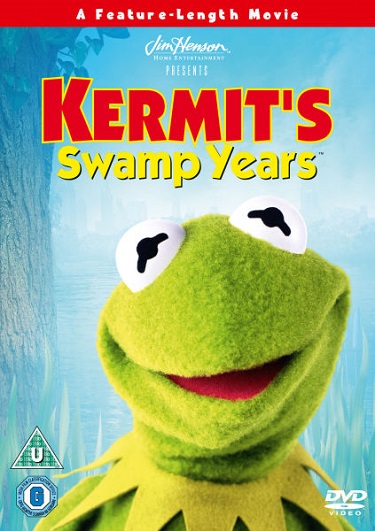
Kermit is an honorary board member of the Mississippi Arts and Entertainment Center (along with Morgan Freeman, Jimmy Buffett and a few others). So all of these great connections between Henson’s Muppets and Mississippi make it even harder to believe that for a time in the early 1970s, the state actually banned Sesame Street airing in Mississippi, and yet, that’s exactly what happened.
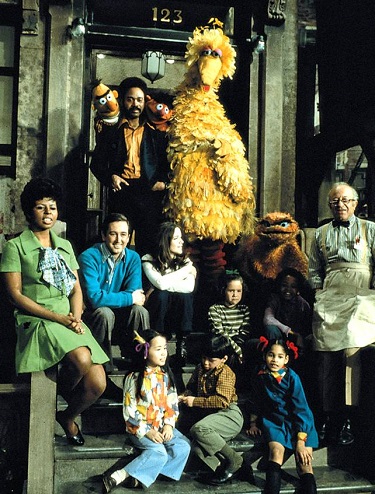
Read the rest of this entry »
April 27th, 2015 | Posted in TV Legends Revealed | 2 Comments
Here is the latest in a series of examinations into urban legends about music and whether they are true or false. Click here to view an archive of the movie urban legends featured so far.
MUSIC LEGEND: Toto’s “Rosanna” was about Rosanna Arquette.
Toto was a long-lived band that was particularly popular in the late 1970s and early 1980s.
The band was unique in that it was made up of musicians who were veteran musicians working on albums for OTHER bands and performers. They were the session musicians you call in to do your album.
A group of these session guys got together and formed their own band, and they won the Grammy for Best New Artist in 1977.

In 1982. the band hit its zenith in popularity with the multi-Grammy award winning album, Toto IV, which is the rare album where you really can’t pick which of its singles is THE most famous Toto song. That album featured the smash hits “Africa” AND “Rosanna.”


At the time of the recording of the album, band keyboardist Steve Porcaro (seen here)…

was dating the actress, Rosanna Arquette.

So, naturally, everyone assumes that the song was written about Arquette, and all sorts of reference books still list that as fact. But IS it true?
Read the rest of this entry »
April 24th, 2015 | Posted in Music Legends Revealed | 2 Comments
Here is the latest in a series of examinations into urban legends about movies and whether they are true or false. Click here to view an archive of the movie urban legends featured so far.
MOVIE/VIDEO GAME URBAN LEGEND: Universal Studios sued Nintendo over Donkey Kong infringing on their King Kong trademark.
One of the most interesting aspects of trademark law is that cases involving trademark infringement rarely actually make it to trial. This is because it is almost always more cost-effective for a person or a company to simply change the trademark that they are using when they receive a cease and desist letter from a large company asserting trademark infringement rather than spending the money to go to trial to defend their use of the mark. If you follow that train of thought to its logical conclusion, then, you will realize then that it is possible for large companies to successfully argue trademark infringement even if they don’t have a legal leg to stand on, simply because they have enough money to threaten smaller entities into backing down. They are essentially the 300-pound gorilla in the room and everyone has to get out of their way. When one of those small companies does choose to fight back, though, the results can be surprising. An excellent example of this is when Universal City Studios (“Universal”) decided to sue Nintendo over Donkey Kong infringing upon Universal’s King Kong trademark.
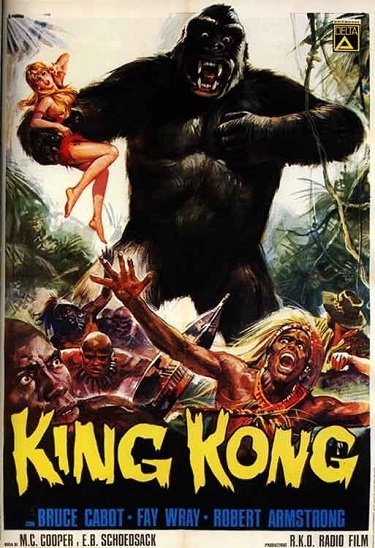
Read the rest of this entry »
April 23rd, 2015 | Posted in Grab Bag Legends, Movie Legends Revealed, Video Game Legends Revealed | 4 Comments
Here is the latest in a series of examinations into urban legends related to architecture and whether they are true or false. Click here to view an archive of the magazine urban legends featured so far.
MAGAZINE URBAN LEGEND: A series of photos of the Normandy landing during D-Day by famed war photographer Robert Capa for Life Magazine were blurry because Capa’s hands were shaking as he took the shots.
Robert Capa (born Endre Friedmann in Austria-Hungary in 1913) was a famous war photographer, active from 1933 until his death in 1954, while photographing the conflict in Indochina (he tragically stepped on a landmine).
Capa was particularly well-known for how close to the action he got. He had a saying that, effectively, if your photos weren’t good enough it was because you weren’t close enough.
Capa was with the invading troops on Normany, and he took close to four full rolls of film of the invasion.
But what came next was a minor tragedy in and of itself.
Read the rest of this entry »
April 22nd, 2015 | Posted in Grab Bag Legends, Magazine Legends Revealed, Photography Legends Revealed | No Comments
Here is the latest in a series of examinations into urban legends about TV and whether they are true or false. Click here to view an archive of the TV urban legends featured so far.
TV URBAN LEGEND: The Da Vinci Code was nearly adapted for the third season of 24.
One of the great characteristics of 24 is that every season could tell a dramatically different type of story. The character of Jack Bauer gives the producers a major advantage as he works in all sorts of different plots, so you can essentially just place Bauer in the middle of any kind of plot and he’ll adapt to it.

This is what 20th Century Fox does with their popular film character John McClaine. As we’ve previously featured in Movie Legends Revealed, the first three sequels to Die Hard were based on existing stories with John McClaine just added to them. Heck, the third Die Hard film, Die Hard With a Vengeance, was nearly Lethal Weapon 4 before it became Die Hard 3. So with that in mind, Fox could easily adapt another story for 24. In fact, that’s what they tried to do years ago with the third season of 24. The story they tried to adapt? The Da Vinci Code!
Read the rest of this entry »
April 21st, 2015 | Posted in TV Legends Revealed | No Comments
Here is the latest in a series of examinations into urban legends about music and whether they are true or false. Click here to view an archive of the movie urban legends featured so far.
MUSIC LEGEND: The hit song “The Poor People of Paris” got its name through a mistaken translation.
Talking about the lyrics of a song that is most famous as an instrumental is a bit funny, but hey, it’s still a good story!
In 1956, Les Baxter and his orchestra had a #1 hit single with the song “The Poor People of Paris.”
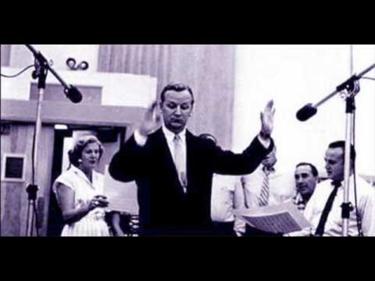
It was an instrumental piece (back when instrumental pieces being #1 hits on the Billboard charts was not at all uncommon) and it lasted as #1 for six weeks!
A few weeks into Baxter’s run on the top of the US charts, Winifred Atwell began a three-week run of her own at the top of the BRITISH charts with a piano version of the instrumental piece…
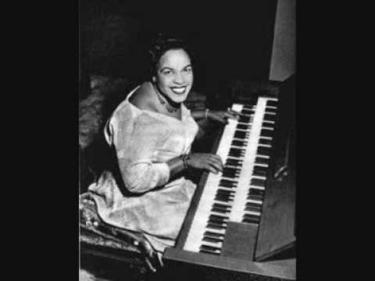
However, the song was originally written in 1954 with lyrics by Jack Lawrence, best known for writing the English lyrics to the song that became “Beyond the Sea.”
Here, Lawrence was again writing the English lyrics to a French song. However, the name of the song (and basically all of Lawrence’s lyrics) were affected by a translation screw-up!
Read the rest of this entry »
April 20th, 2015 | Posted in Music Legends Revealed | No Comments
Here is the latest in a series of examinations into urban legends about toys and whether they are true or false. Click here for an archive of all toy urban legends featured so far!
TOY URBAN LEGEND: G.I. Joe‘s Snake Eyes cannot be depicted as being a fan of the New York Yankees.
If you grew up in the United States during the mid-to-late 1980s it is unlikely that you do not have at least a passing familiarity with the animated series G.I. Joe: A Real American Hero, which was based on the Hasbro toy line of the same name about a special mission force who combats a terrorist group known as Cobra.

One of the most famous (or perhaps infamous) parts of the show was how each episode would end with a public service piece where a member of the G.I. Joe team would give pretty common sense advice to young people. Stuff like “don’t pet strange dogs” or “don’t play with downed power wires.” The kid would invariably comment about how now they know what to do, and the G.I. Joe member would retort that “knowing is half the battle.”
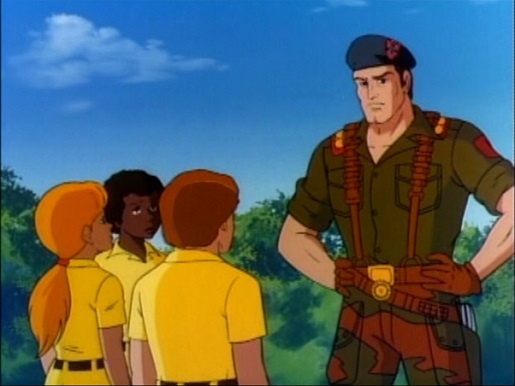
In keeping with that theme of “knowing is half the battle” (as well as Major League Baseball’s Opening Day last week) a reader wrote in to ask:
There’s a crazy rumor that Hasbro does not allow Snake Eyes from G.I. Joe to be portrayed as a Yankees fan in any form of media. True or False?
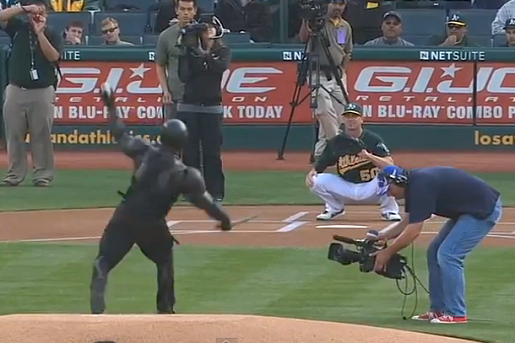
Let’s find out!
Read the rest of this entry »
April 16th, 2015 | Posted in Grab Bag Legends, Toy Legends Revealed | No Comments
Here is the latest in a series of examinations into urban legends about movies and whether they are true or false. Click here to view an archive of the movie urban legends featured so far.
MOVIE URBAN LEGEND: ‘N Sync filmed appearances as Jedi knights in Star Wars: Attack of the Clones.

Perhaps the key moment in the second Star Wars prequel, Attack of the Clones, is what is known as “The First Battle of Geonosis,” where Mace Windu and a group of Jedi Knights are saved from Separatists led by former Jedi Knight Count Dooku by Yoda and the Republic’s new clone army. This was the first battle of what would become known as the Clone Wars and was also all part of then-Supreme Chancellor Palpatine’s secret plan to take complete control of the Republic by manufacturing a civil war that would require him to be given special powers that would lead to him becoming Emperor Palpatine. The battle featured a whole lot of Jedi Knights in the background.
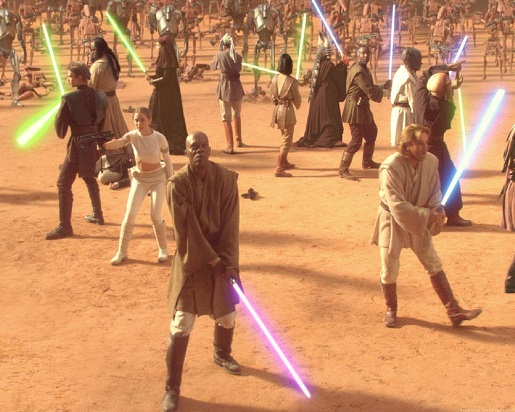
There were so many that it would be pretty easy to sneak some well-known faces into the background without any one noticing. Reader Chris B. wrote in to ask if that’s exactly what was done with the members of the pop group ‘N Sync. Chris asked:
I remember back when Star Wars Episode II was coming out I heard a rumor that the members of NSync would be playing Jedi Knights during the climatic final scene. You know, the one where Sam Jackson defiantly exclaims “This Party’s Over!” (hate that part). Anyhoo, if you could work some mojo and grab me an answer, I would be eternally grateful.
Read on for the answer!
Read the rest of this entry »
Tags: Star Wars
April 15th, 2015 | Posted in Movie Legends Revealed | No Comments
